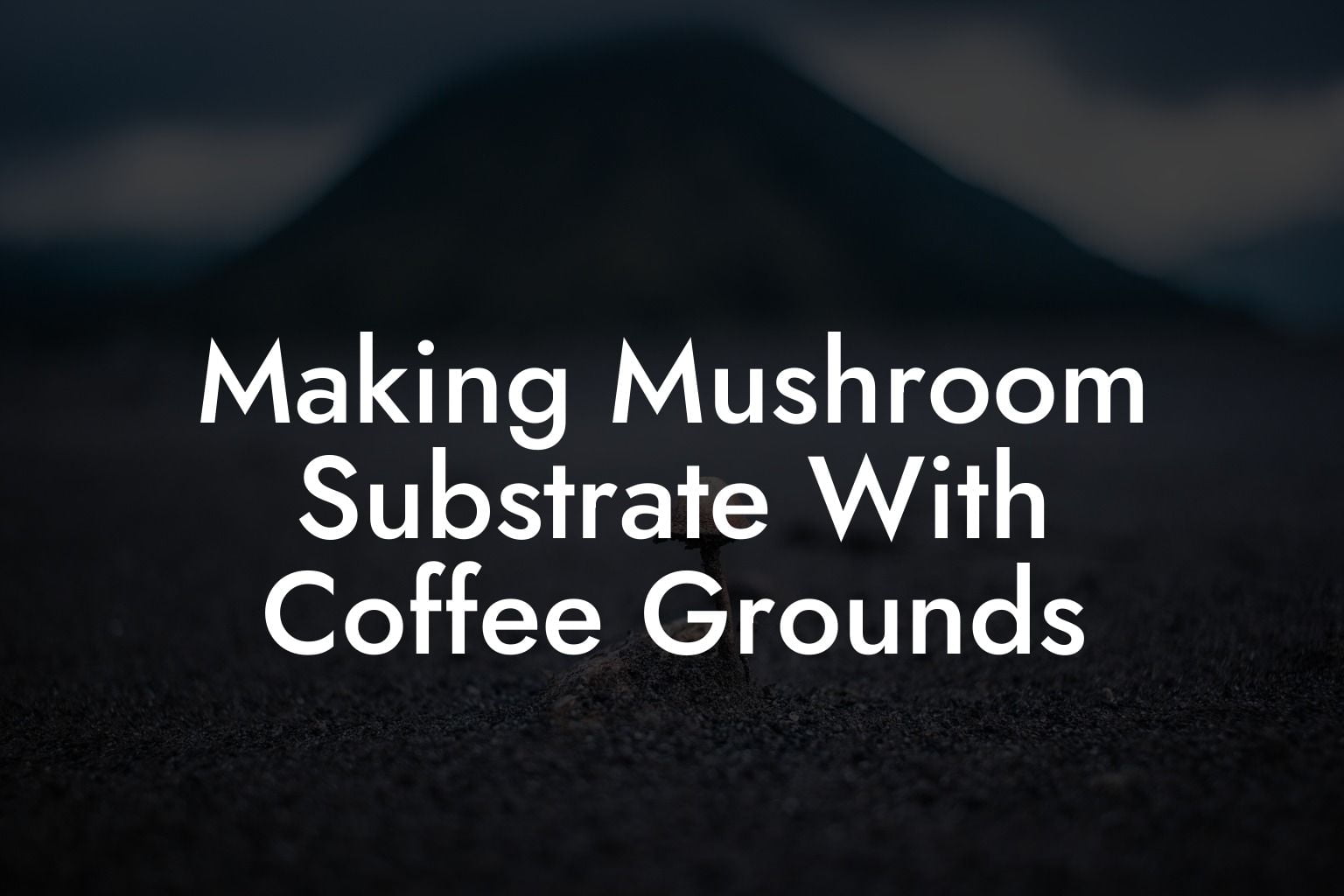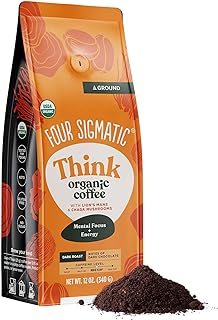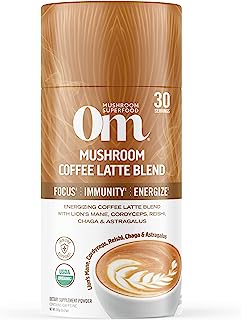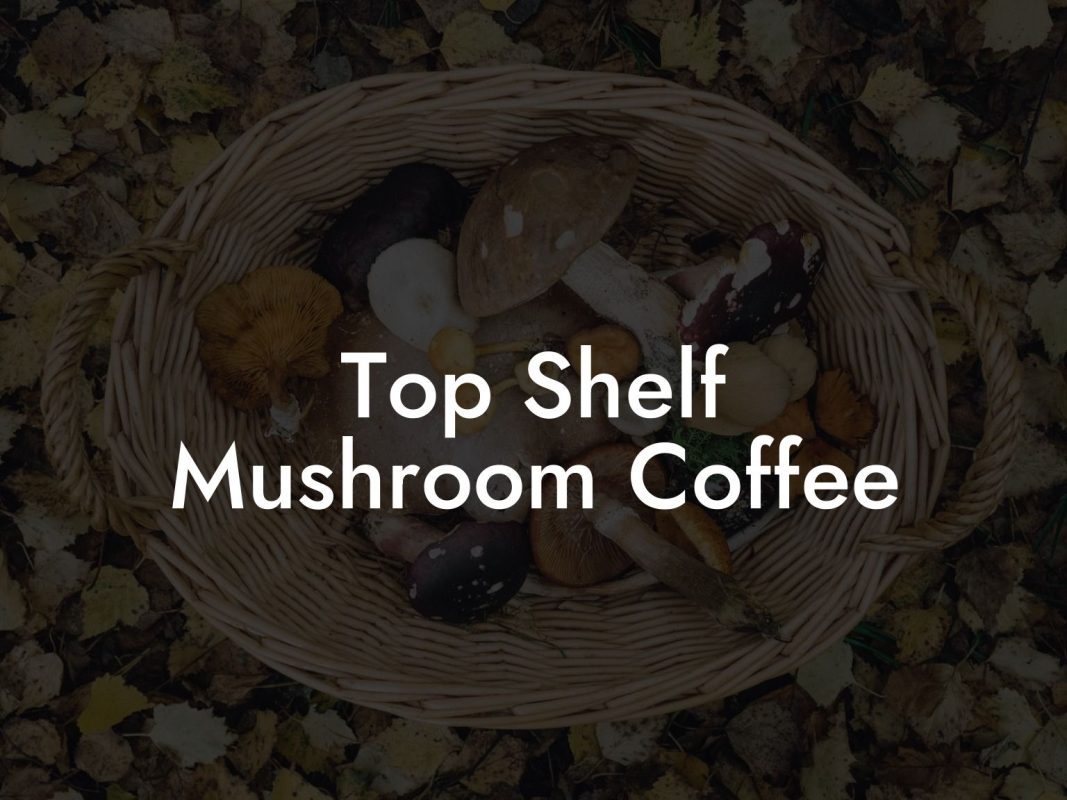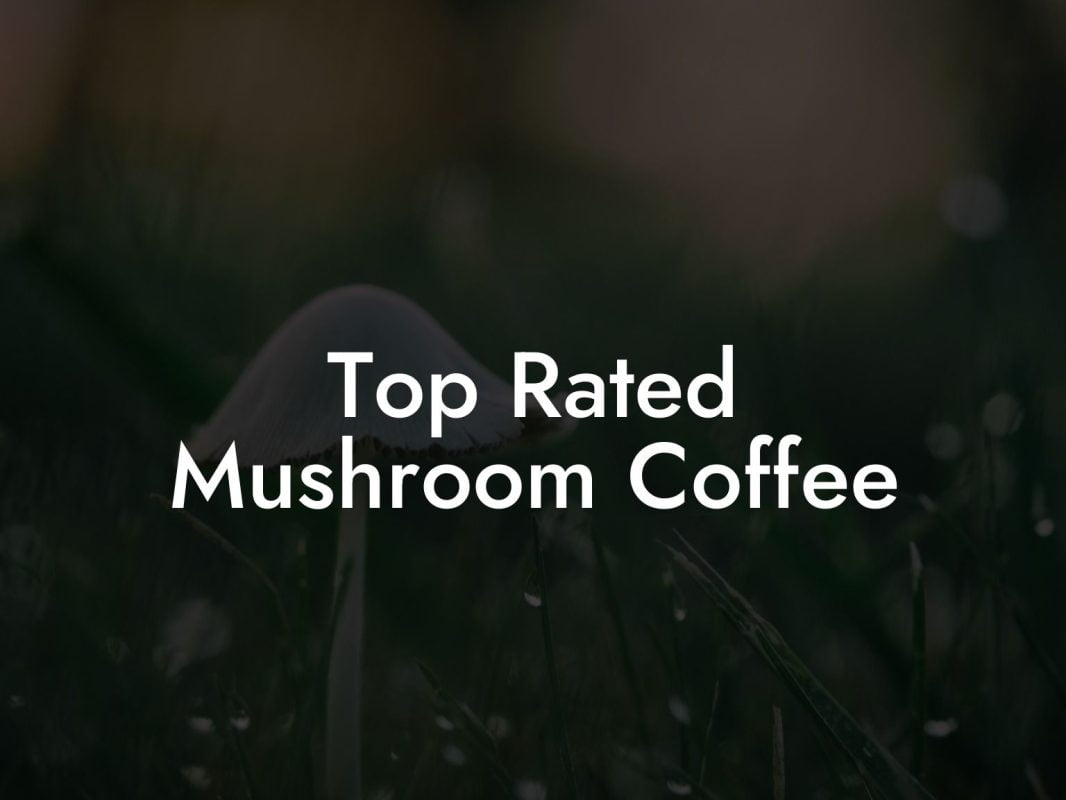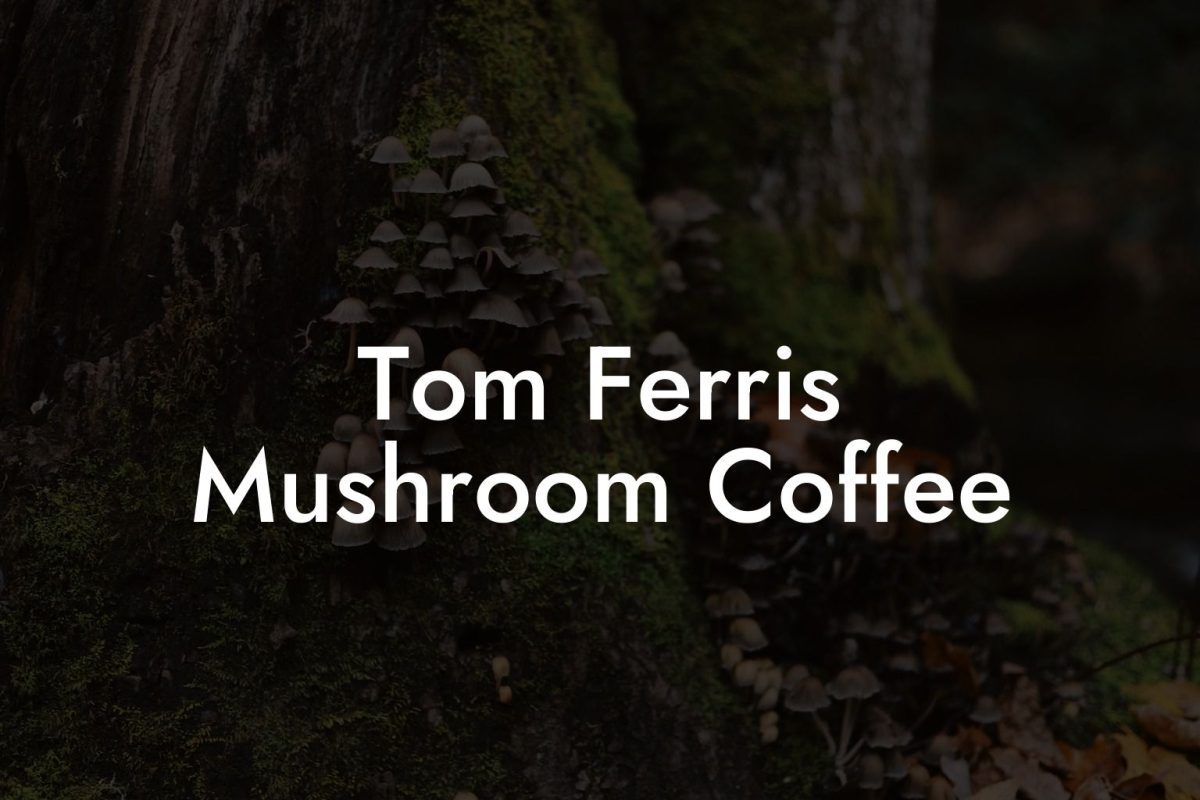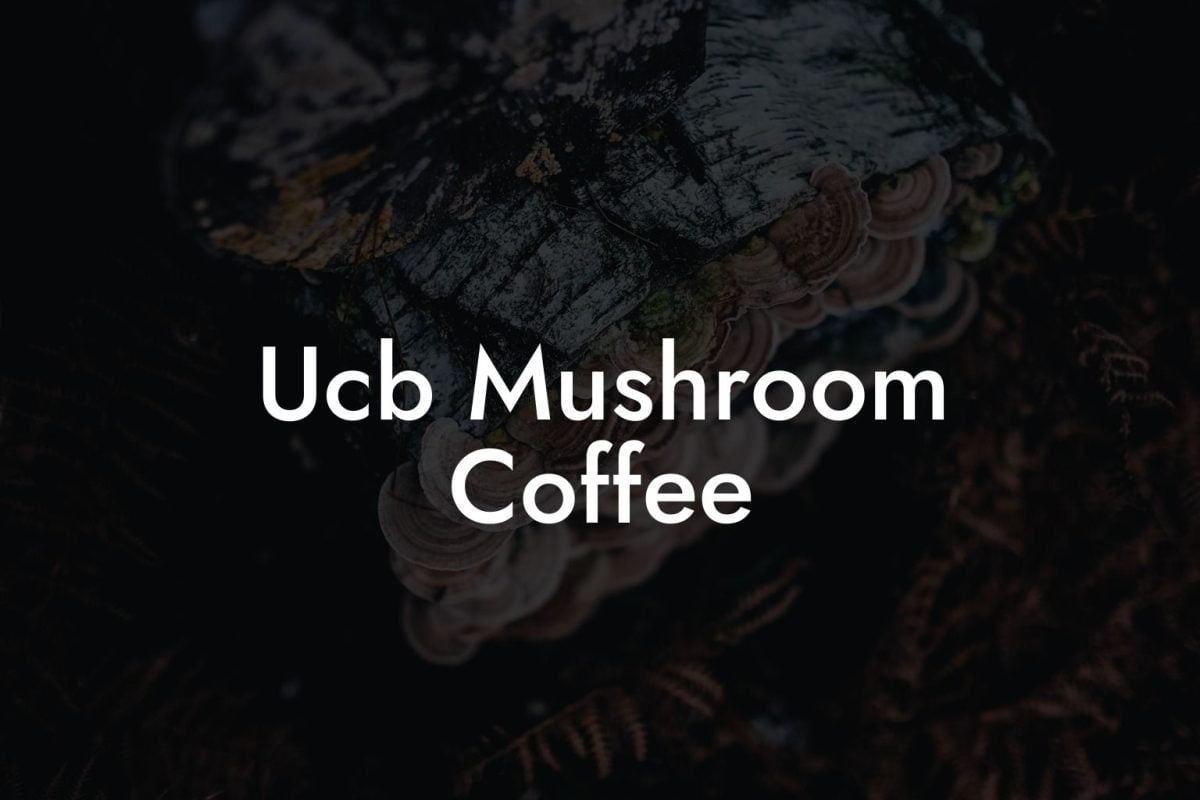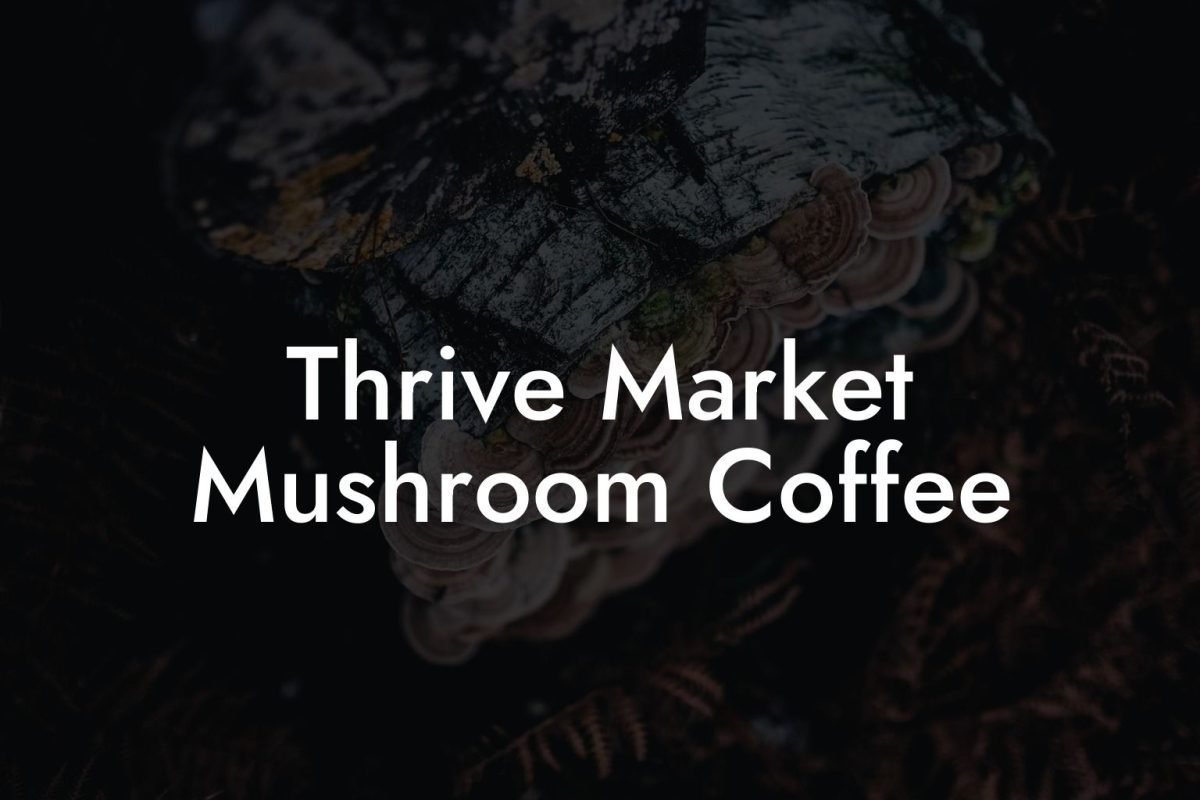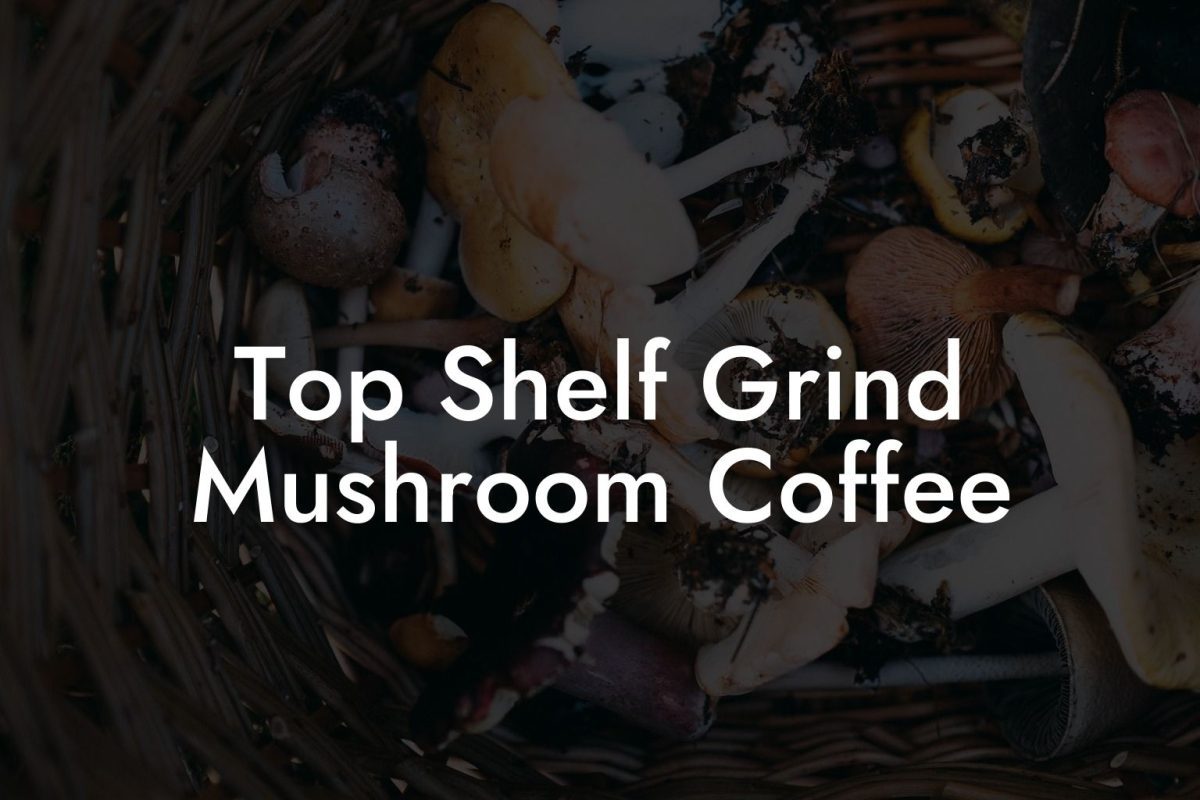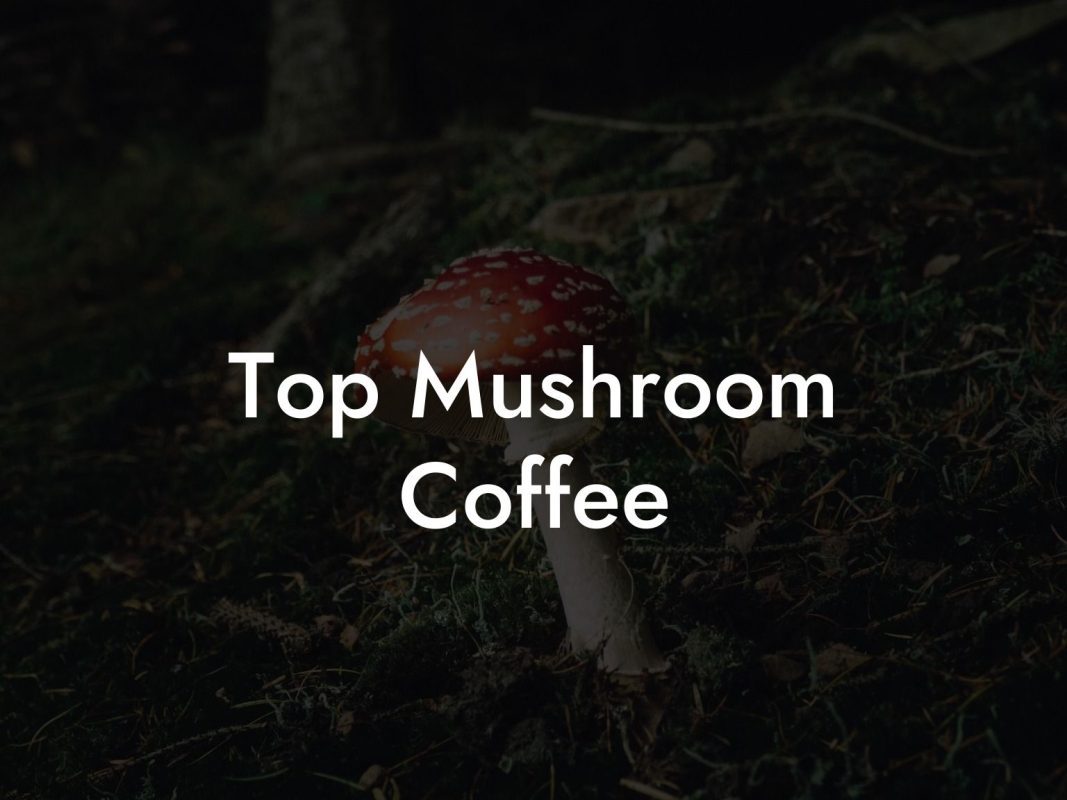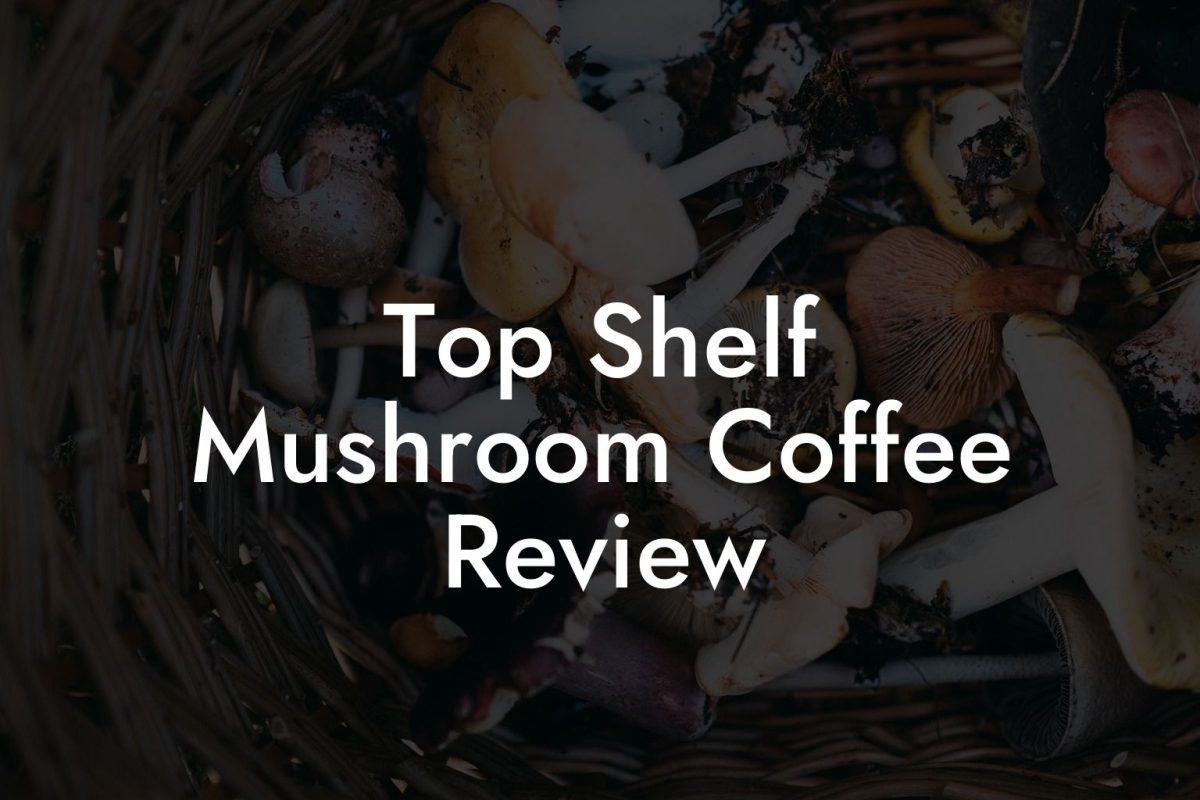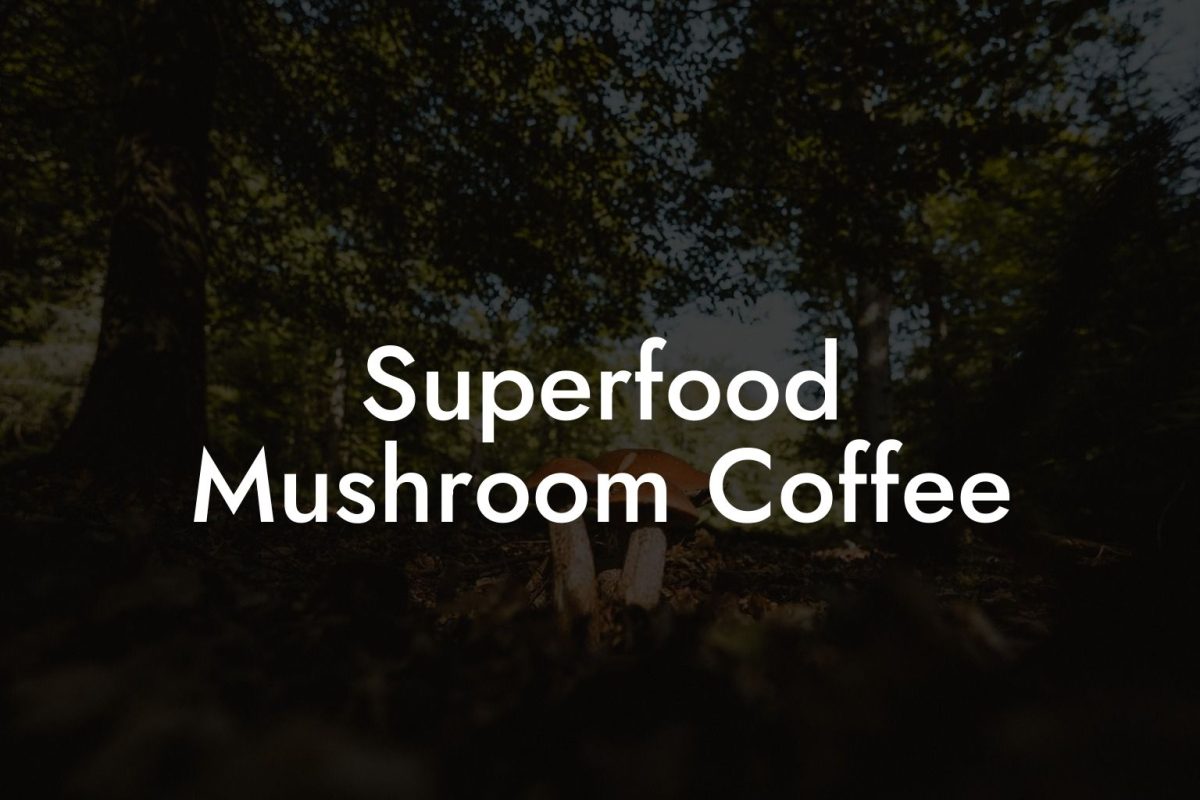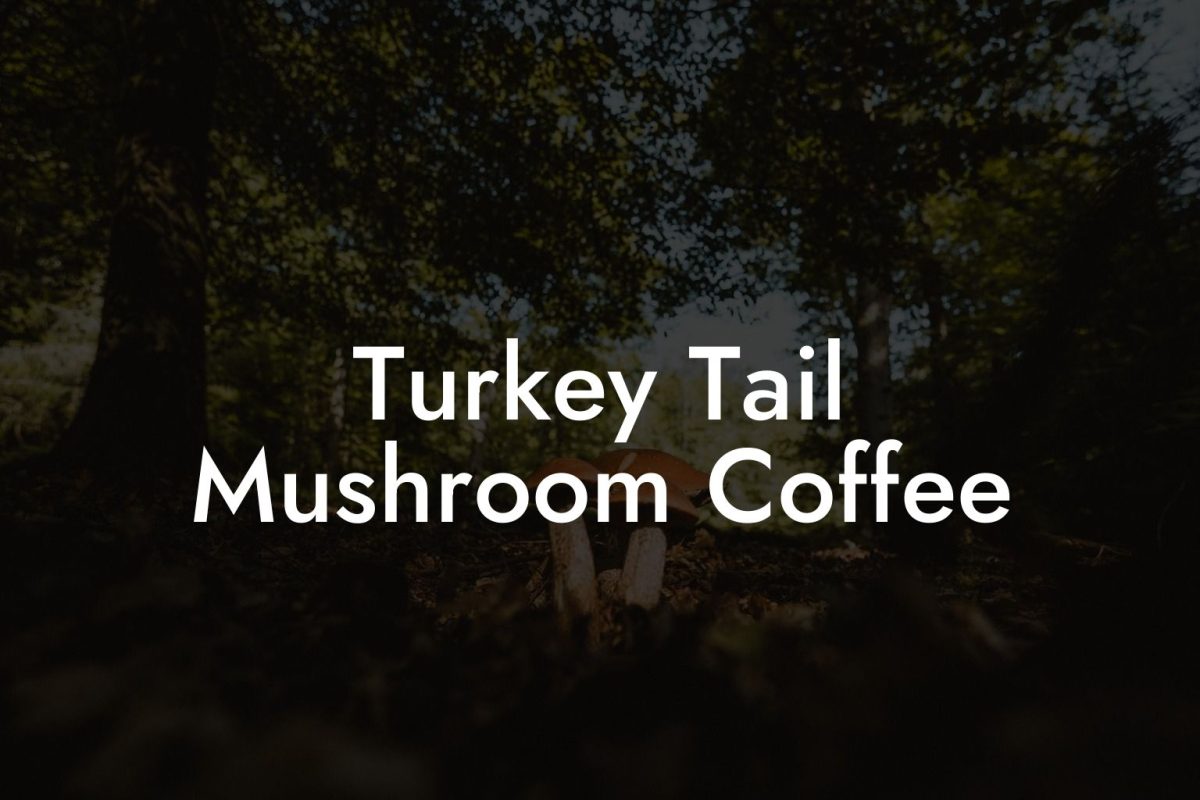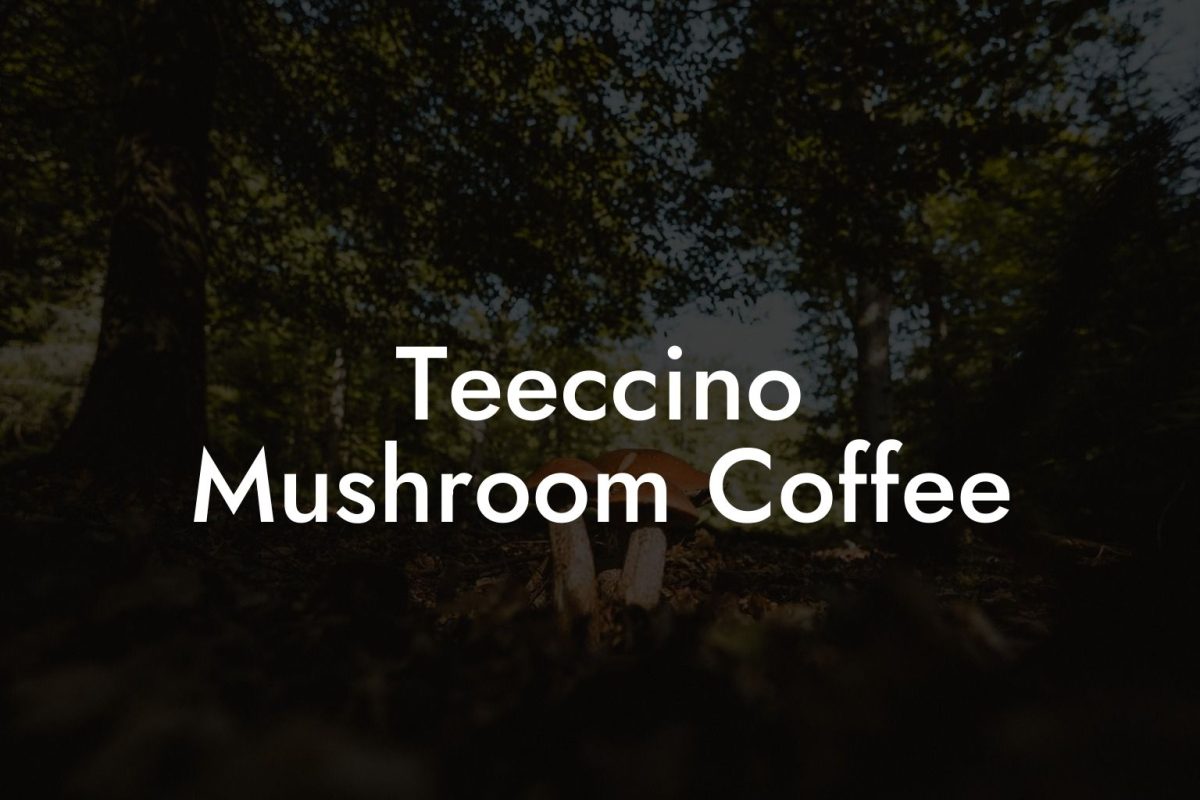Picture this: You’re breezing through your local coffee shop, latte in hand, when you suddenly wonder, “What if I could turn these coffee grounds into something epic?” Not a new flavor of coffee, but a groundbreaking, eco-friendly foundation for growing your very own gourmet mushrooms. Welcome to the wild, quirky intersection of coffee and fungi! In this guide, we’re diving deep into the art of making mushroom substrate with coffee grounds, a sustainable, fun, and wallet-friendly method that’s perfect for urban farmers, eco-warriors, and Gen-Z creatives alike. Get ready to brew up some magic in your mushroom lab!
Quick Links to Useful Sections
- Understanding the Basics: What Is Mushroom Substrate and Why Coffee Grounds?
- The Science Behind Coffee Grounds in Mushroom Cultivation
- Your Eco-Friendly Toolbox: Equipment and Ingredients Checklist
- Step-by-Step: Crafting Your Mushroom Substrate with Coffee Grounds
- Step 1: Sourcing and Preparing Your Coffee Grounds
- Step 2: Balancing Your Substrate Mix
- Step 3: Pasteurization, Your Substrate’s Spa Day
- Step 4: Cooling and Inoculation
- Step 5: Incubation, Giving Mycelium Time to Work Its Magic
- Step 6: Fruiting, Time for the Fungi to Shine
- Troubleshooting and Pro Tips: Avoiding Common Pitfalls in Your Substrate Journey
- Contamination Concerns
- Moisture Management
- Temperature and Humidity Settings
- Mixing Ratios and Experimentation
- Advanced Techniques and Customizations: Elevate Your Mushroom Cultivation Game
- Layering Your Substrate
- Using Mycelium-Infused Coffee Grounds
- Customizing Your Environment
- Pairing with Innovative Mushroom Coffee Trends
- Exploring the Synergy Between Coffee and Mushrooms
- Resources and Community Support: Your Next Steps
- Frequently Asked Questions About Using Coffee Grounds for Mushroom Substrate
- Your Future as an Eco-Innovative Mushroom Cultivator
Understanding the Basics: What Is Mushroom Substrate and Why Coffee Grounds?
In the world of mushroom cultivation, “substrate” refers to the nutrient-rich medium where mushrooms germinate and grow. Think of it as the soil for your fungus friends. Traditionally, mushroom growers use substrates like straw, sawdust, or manure, but here’s where things get interesting: repurposing used coffee grounds as a primary ingredient.
Coffee grounds are not just bio-waste; they’re a powerhouse of nutrients including nitrogen, phosphorus, and potassium, all essential for strong, healthy mushroom growth. When combined with other materials such as vermiculite or coir, these coffee grounds create a substrate that’s rich in organic matter and perfect for the mycelium (the root system of mushrooms) to colonize.
So why are coffee grounds stealing the spotlight in modern mushroom farming? Two words: sustainability and simplicity. By recycling coffee grounds, you’re diverting waste from landfills, cutting down on your mushroom growing costs, and making a bold eco-friendly statement. Plus, there’s an undeniable cool factor to growing mushrooms with the same beans that kick-started your morning.
The Science Behind Coffee Grounds in Mushroom Cultivation
Let’s get a bit nerdy for a moment. The secret sauce behind using coffee grounds in mushroom substrate lies in their biochemical composition. When you brew a cup of joe, the process extracts many of the flavorful compounds, but a surprising amount of nutrients remain in the used grounds. These include nitrogen, which is the lifeblood for mycelial expansion, trace minerals like magnesium, and even some residual caffeine.
Looking For The Best Mushroom Coffee? You'll Love These:
Caffeine might sound like an unlikely nutrient for mushrooms, but research suggests that small amounts can actually stimulate mycelial growth. Further, the acidic nature of coffee grounds creates an environment that naturally wards off some harmful bacteria, giving your mushroom spawn a better fighting chance.
Another plus? Coffee grounds help retain moisture, a critical factor in the colonization phase. They combine superbly with other organic materials, creating an ideal balance of water retention and aeration. This mix is crucial because it ensures that the mycelium can spread without suffocating, a common pitfall in less balanced substrates.
In short, leveraging coffee grounds is a symbiotic win: your morning brew fuels your day, and its leftovers fuel your fungi!
Your Eco-Friendly Toolbox: Equipment and Ingredients Checklist
Before you embark on your mushroom substrate adventure, let’s make sure your toolkit is as ready as you are. Here’s a checklist of the must-have items:
- High-quality used coffee grounds: Preferably organic and freshly used. Avoid coffee with added flavors or creamer if possible.
- Supplementary materials: Options include coconut coir, vermiculite, straw, or sawdust. These help balance moisture and texture.
- Mushroom spawn: Choose the mushroom variety you want to cultivate, oyster, shiitake, or even lion’s mane.
- Sterilization tools: Pressure cooker or large pot, along with heat-resistant bags or jars to minimize contamination.
- Mixing and measuring gear: A large mixing bowl, gloves, a spray bottle for misting water, and a digital scale for precision.
- Environmental controls: Thermometer and hygrometer to monitor temperature and humidity in your growing area.
Having these tools at your disposal means you’re not just a dreamer, you’re a well-equipped, eco-savvy cultivator ready to transform everyday waste into a sustainable treasure.
Step-by-Step: Crafting Your Mushroom Substrate with Coffee Grounds
Ready to dive into the DIY process? Let’s break it down into some easy-to-follow steps that’ll have you cultivating mushrooms like a pro in no time.
Step 1: Sourcing and Preparing Your Coffee Grounds
The first step in this eco-revolution is sourcing your coffee grounds. Look for local cafes or make it a habit to save your own grounds at home. The fresher, the better, ideally within 24 hours of brewing, to avoid contamination.
Once collected, spread the coffee grounds out on a clean surface or a baking sheet to dry for a few hours. This step prevents excess moisture, which is a breeding ground for mold and unwanted bacteria. And remember: always wear gloves during handling to maintain hygiene!
Step 2: Balancing Your Substrate Mix
Pure coffee grounds, while nutrient-rich, can be a bit too acidic or dense if used alone. Mix in another substrate base like coconut coir, sawdust, or vermiculite. A common ratio is 50-50, but experiment according to what’s readily available and your specific mushroom strain’s needs.
The goal here is to create an environment with the perfect balance of moisture retention and aeration. A well-balanced substrate not only supports healthy mycelium growth but also prevents the substrate from compacting, which could lead to contamination.
Step 3: Pasteurization, Your Substrate’s Spa Day
Pasteurizing your substrate is like giving it a detox session. You want to eliminate any competing microorganisms without completely sterilizing everything (since some beneficial bacteria can actually help). Using a large pot or a pressure cooker, heat your substrate mix to a temperature between 140°F and 160°F for about an hour. This gentle heat treatment kills off most unwanted entities while preserving the integrity of your nutrient-rich coffee grounds.
Pro-tip: Use a thermometer to monitor your temperature carefully. Going overboard can kill off the beneficial organisms that support mushroom growth!
Step 4: Cooling and Inoculation
After pasteurization, allow your substrate to cool dramatically, this is crucial because hot substrate can kill your mushroom spawn. Once it’s down to room temperature, it’s time for inoculation: the process of introducing mushroom spores or spawn to your substrate.
Working in a sanitized environment (think: clean hands, gloves, and a sanitized workspace), mix your mushroom spawn evenly into the substrate. This ensures that the mycelium has ample opportunity to spread and colonize every bit of the nutrient-rich medium.
Step 5: Incubation, Giving Mycelium Time to Work Its Magic
With your inoculated substrate in hand, transfer the mix into breathable containers or bags. Place these in a warm, dark, and humid environment, ideally maintained at around 70°F to 75°F. This incubation period, which can range from 1 to 3 weeks, is when the mycelium starts its vigorous colonization.
Keep a close eye on the process, making sure the substrate remains moist but not overly wet. A light misting with water a couple of times a day (depending on your ambient humidity) should do the trick.
Step 6: Fruiting, Time for the Fungi to Shine
Once your substrate is fully colonized and has developed a thick, white mycelial network, it's time to trigger fruiting. Relocate your setup to a cooler, well-lit (but not direct sunlight) area with increased fresh air circulation. This change in environment signals to the mycelium that it’s time to produce mushrooms.
Within several days, you should start to see tiny pins (baby mushrooms) forming. With consistent care (think regular misting and maintaining proper temperature), these pins will mature into fully-fledged mushrooms ready for harvest.
And there you have it! By following these steps, you’re not just recycling coffee grounds, you're crafting a deluxe, nutrient-packed substrate that turns waste into your next culinary or medicinal masterpiece.
Troubleshooting and Pro Tips: Avoiding Common Pitfalls in Your Substrate Journey
Even in the best of DIY endeavors, things can sometimes go sideways. Here are some common hiccups and how to sidestep them:
Contamination Concerns
Contamination is the arch-nemesis of any mushroom cultivator. It usually happens when unwanted bacteria or molds hijack your substrate. To prevent this:
- Keep your work area meticulously clean by sanitizing surfaces and hands before handling your substrate.
- Avoid reusing contaminated coffee grounds or substrates from previous batches.
- Invest in high-quality spawn from reputable suppliers to reduce risk.
A little extra care at the beginning can save you endless frustration later!
Moisture Management
Too dry? Too soggy? Moisture balance is critical. If your substrate is too dry, the mycelium struggles to colonize. Conversely, overwatering creates a breeding ground for contaminants. Use a spray bottle to control water application, and always check the substrate’s consistency. It should feel like a well-wrung-out sponge.
Temperature and Humidity Settings
Changes in temperature and humidity can stall mycelial growth. Keep your incubation space within the ideal range and consider investing in a small humidifier if you’re in a dry environment. Similarly, monitor the temperature closely; a sudden dip or spike might delay your mushroom’s development.
Mixing Ratios and Experimentation
Every batch of coffee grounds can be a little different depending on the brew strength and origin. Don’t be afraid to experiment with different mixing ratios of coffee grounds to supplementary materials. Over time, you’ll hone in on the perfect blend for your specific growing conditions.
Remember, every failed batch is just another lesson in your path to becoming a master mushroom cultivator.
Advanced Techniques and Customizations: Elevate Your Mushroom Cultivation Game
Ready to take things to the next level? Once you’ve nailed the basics, there’s an exciting world of advanced techniques waiting for you.
Layering Your Substrate
Some cultivators swear by a layered substrate method, where you alternate layers of coffee grounds with other organic substrates like straw or even a nutrient-rich compost layer. This not only creates a more diverse nutrient profile but also improves airflow, a key factor in preventing bacterial growth.
Experiment with different layers and monitor which combinations yield the fastest colonization and largest fruiting bodies.
Using Mycelium-Infused Coffee Grounds
Imagine boosting your substrate by first infusing your coffee grounds with a healthy dose of mycelium. By pre-colonizing portions of your substrate, you can jump-start the process once the full mix is prepared. This technique can significantly reduce incubation time and help suppress contaminants by enabling quick mycelial expansion.
Customizing Your Environment
Advanced growers often build small, controlled environments, think mini-greenhouses or specialized grow tents, that allow for meticulous regulation of humidity, temperature, and light. Investing in these setups can yield better, more consistent results, and they’re perfect for those who take their DIY mushroom farming as seriously as their artisanal coffee craft.
Pairing with Innovative Mushroom Coffee Trends
Here’s the twist: many of us love to blend our love for coffee and mushrooms into one iconic brew, mushroom coffee! Growing your own substrate from coffee grounds builds a full-circle narrative: you’re recycling what once fueled your mornings into a medium for cultivating mushrooms that may eventually end up enhancing your next cup of coffee. It’s a true eco-friendly loop, and bragging rights included!
By experimenting with strain-specific techniques and environmental tweaks, you can truly refine your process into a personalized art form, a blend of science, sustainability, and a little bit of magic.
Exploring the Synergy Between Coffee and Mushrooms
Beyond the practical benefits, there’s a poetic synergy in melding coffee with mushrooms. Coffee, with its robust aroma and vibrant energy, meets the quiet, mysterious world of fungi and creates a narrative that resonates with today’s eco-conscious and health-savvy crowd.
In traditional cultures, mushrooms have long been revered for their medicinal properties. Modern science has validated many of these uses, such as boosting immunity and reducing inflammation. When combined with the antioxidants found in coffee, you inadvertently stir up a supercharged blend that not only nurtures your body but also contributes to a more sustainable lifestyle.
Whether you’re a self-proclaimed foodie, a weekend urban farmer, or simply someone who wants to make every drop of their coffee count, growing mushrooms using coffee grounds is a statement of creativity, sustainability, and innovation.
Resources and Community Support: Your Next Steps
The journey to a greener, more sustainable future is best traveled together. As you embark on your adventure in creating the ultimate mushroom substrate, remember that there’s a vibrant community of DIY cultivators, urban farmers, and eco-innovators waiting to share tips, tricks, and success stories.
Join online forums and social media groups dedicated to mushroom cultivation and sustainable living. Check out local workshops or community gardens where you can exchange ideas and even trade some of your homegrown mushrooms. Websites like Shroomery, FreshCap, and various Facebook groups offer abundant resources and a platform for sharing your progress.
If you’re a visual learner, plenty of YouTube channels and Instagram accounts showcase step-by-step tutorials and creative hacks for substrate mixing, spawn inoculation, and fruiting techniques. The more you engage, the broader your toolkit becomes, think of it as a never-ending masterclass in sustainable innovation.
Finally, don’t hesitate to experiment and share your unique blend with the community. Your creative twists might inspire the next wave of urban mushroom farmers who are ready to convert their leftover coffee into culinary, medicinal, or even artisanal treasures.
Frequently Asked Questions About Using Coffee Grounds for Mushroom Substrate
We’re betting you have some burning questions about this novel approach. Here are a few of the most frequently asked questions to help you troubleshoot and master your mushroom substrate game:
1. Can I use any type of coffee grounds for my substrate?
Absolutely! Ideally, opt for organic, freshly used coffee grounds without any additives or synthetic flavors. The fresher they are, the better they’ll support healthy mycelium growth.
2. Do I need to mix in other substrates with the coffee grounds?
Yes, while coffee grounds are nutrient-rich, they’re best used in combination with other materials such as coconut coir, straw, or sawdust. This mix helps optimize moisture retention and aeration for optimal mycelial colonization.
3. How do I avoid contamination in my substrate?
Maintaining a sterile work environment is key. Ensure you sanitize all tools and surfaces, use gloves when handling the substrate, and carefully pasteurize the mix to reduce unwanted bacteria and molds.
4. How long does it take for mushrooms to colonize the substrate?
Generally, after inoculation, expect the mycelium to colonize the substrate within 1 to 3 weeks under ideal conditions. The time frame may vary based on environmental factors and the mushroom species used.
5. What environmental conditions are best for colonization?
A warm, dark, and humid environment (around 70°F to 75°F with controlled humidity) is ideal. Once the substrate is fully colonized, you can shift conditions to trigger fruiting by introducing light and fresh air.
6. Can I reuse coffee grounds that have been left for too long?
It’s best to use freshly collected coffee grounds to maximize nutrient content and reduce the risk of contamination. If they’re older, inspect thoroughly and consider supplementing with additional substrates.
7. What mushrooms work best with coffee grounds substrate?
Many cultivators have had success with oyster mushrooms, shiitake, and even lion’s mane. However, experimentation is encouraged, each strain might react differently to the nutrient mix in your coffee grounds substrate.
8. How can I tell if my substrate is too wet or too dry?
The ideal substrate feels like a wrung-out sponge: moist, but not dripping. If water pools at the bottom, it’s too wet; if it crumbles easily, it’s too dry. Adjusting the ratios of supplementary materials can help perfect the balance.
Armed with these insights, you’re well on your way to mastering a sustainable, innovative approach to mushroom cultivation, one cup of coffee at a time!
Your Future as an Eco-Innovative Mushroom Cultivator
The art of making mushroom substrate with coffee grounds isn’t just a clever recycling trick, it’s a whole new way to connect with nature, celebrate sustainable living, and even enhance your morning brew. By mastering this process, you’re opening the door to an exciting adventure in urban farming and eco-innovation. Think about it: every time you make a cup of coffee, you’re one step closer to harvesting your own sustainably grown mushrooms. That’s a pretty epic flex for your next brunch or social media post.
Whether you’re a college student with a passion for sustainability, a young professional striving for low-impact living, or just someone who loves a good DIY project, this guide is your launchpad into an innovative world of green living. Embrace the process, celebrate the small wins, and most importantly, don’t be afraid to get your hands a little (or a lot) dirty.
Every batch you create is a unique experiment, a testament to creativity meeting sustainability. So, join the movement, share your experiences, and transform your wasted coffee grounds into a thriving ecosystem of mushrooms. Happy cultivating!
Looking For The Best Mushroom Coffee? You'll Love These:
Useful Interruption: Dive deeper into the world of Mushroom Coffee with our most popular sections. If there is anything you think is missing or anything you would love for us to write about, just give us a shout.
- Mushroom Coffee Equipment & Product Reviews
- Mushroom Coffee Recipes & Creative Variations
- Mushroom Coffee Guides & Troubleshooting
- Mushroom Coffee Brewing & Preparation Techniques
- Model Rocket Advanced Rocketry & Innovations
- Mushroom Coffee Fundamentals
- Model Rocket Equipment Reviews & Digital Tools
- Mushroom Coffee Health Benefits & Wellness
- Mushroom Coffee Mycology & Scientific Insights
- Mushroom Coffee Community, Lifestyle & Engagement
I tried mushroom coffee this morning and told my friend, "This brew is spore-tacular!" He shot back, "Guess that's why it's such a cap-tivating way to kickstart your day!"

